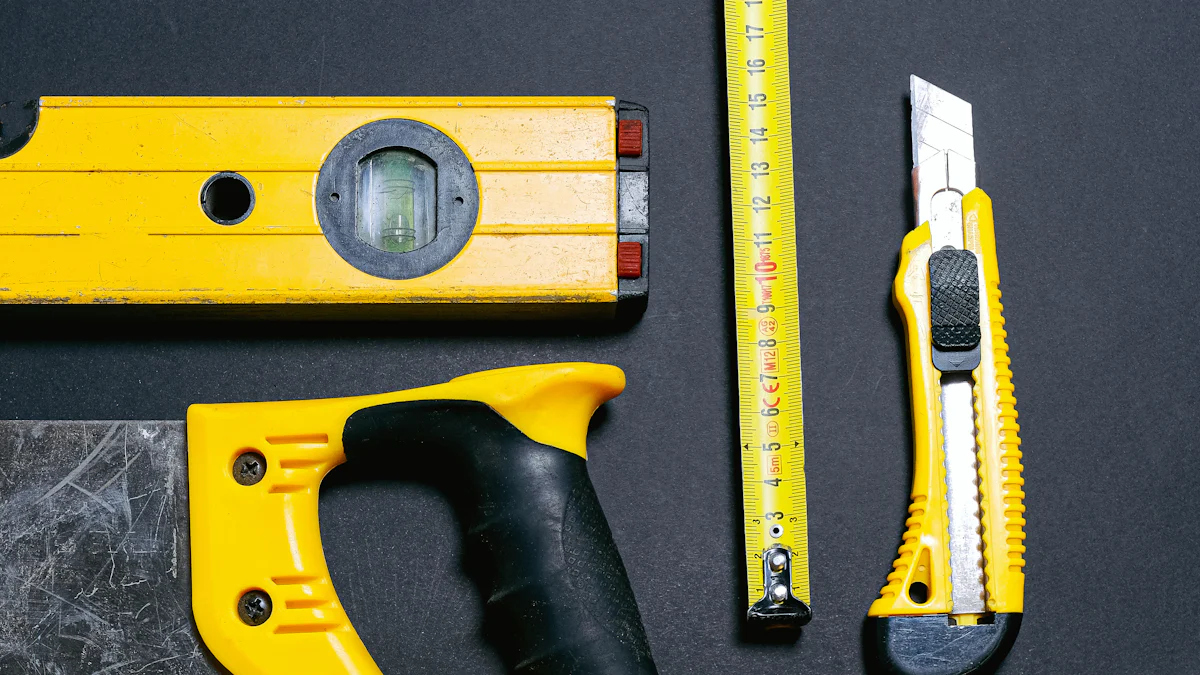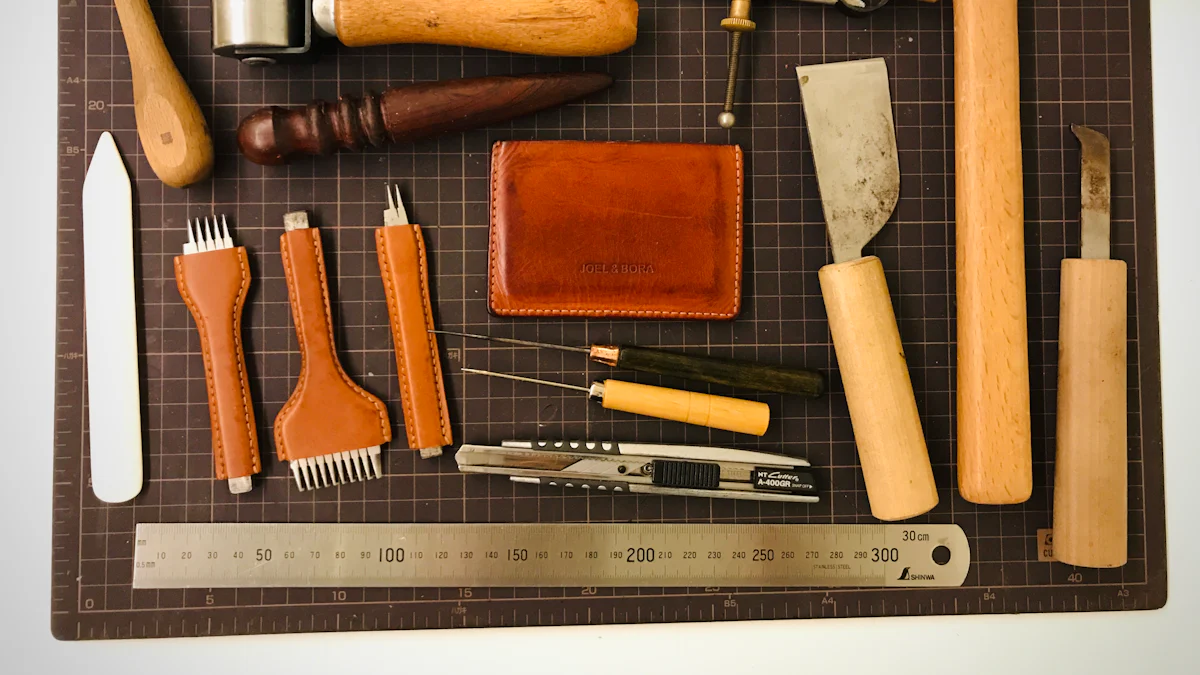
Selecting the right tool for cutting drywall ensures a successful project. Each tool offers unique benefits and challenges. Professional drywall contractors emphasize the significance of choosing appropriate sheetrock cutting tools. A wide variety of options exist, ranging from utility knives to advanced power tools. Understanding the features and uses of these tools can enhance efficiency and precision in your work. Proper selection not only saves time but also improves the quality of the finished product.
Categories of Sheetrock Cutting Tools

Utility Knives
Description and Features
Utility knives serve as essential tools for cutting drywall. These knives feature sharp, replaceable blades that score the paper surface of the sheetrock. The design allows for easy handling and precise cuts. A utility knife often includes a retractable blade for safety and convenience. The compact size makes it a favorite among professionals and DIY enthusiasts.
Advantages and Disadvantages
Utility knives offer several advantages. The tool provides clean and straight cuts with minimal effort. The lightweight nature ensures ease of use and portability. However, utility knives may not suit intricate or curved cuts. Frequent blade replacement can also add to the cost over time.
Saws
Types of Saws
Several saws cater to specific drywall cutting needs. A keyhole saw excels at making small holes and intricate cuts. The jab saw features a pointed tip for starting cuts in the middle of the drywall. Both saws require manual operation but offer precision for detailed work.
Advantages and Disadvantages
Saws provide versatility in cutting various shapes and sizes. The ability to make detailed cuts enhances their appeal. However, manual saws demand more physical effort. The risk of uneven cuts increases without steady hands. Dust generation during cutting can also pose challenges.
Power Tools
Types of Power Tools
Power tools bring efficiency to drywall cutting tasks. Rotary tools use high-speed rotation to cut through sheetrock quickly. Oscillating tools offer versatility with interchangeable blades for different cuts. Brands like DeWalt and Ryobi produce reliable power tools for drywall projects.
Advantages and Disadvantages
Power tools reduce cutting time significantly. The precision and speed make them ideal for large projects. However, power tools require an electrical source and can be costly. The learning curve may also deter beginners from using them effectively.
Factors to Consider When Choosing a Tool
Selecting the right sheetrock cutting tools involves evaluating several factors. Each factor influences the overall efficiency and quality of your drywall project. Understanding these aspects helps in making an informed decision.
Ease of Use
Handling and Comfort
Handling and comfort play a crucial role when choosing sheetrock cutting tools. A comfortable grip reduces fatigue during extended use. Tools with ergonomic designs enhance user experience. Lightweight tools allow for easier maneuverability. Professionals and DIY enthusiasts often prefer tools that offer a balance between comfort and functionality.
Maintenance Requirements
Maintenance requirements impact the longevity and performance of sheetrock cutting tools. Regular maintenance ensures optimal tool function. Tools with replaceable parts, like blades or bits, simplify upkeep. Frequent cleaning prevents dust buildup, which can affect performance. Choosing tools with minimal maintenance needs saves time and effort.
Precision
Accuracy of Cuts
Accuracy of cuts determines the quality of the finished drywall project. Sheetrock cutting tools with sharp blades or precise mechanisms provide cleaner cuts. Tools designed for accuracy reduce material wastage. High precision tools are essential for professional results. Accurate cuts contribute to a polished and seamless finish.
Suitability for Detailed Work
Suitability for detailed work is vital for intricate designs or custom projects. Tools capable of fine adjustments excel in detailed tasks. Sheetrock cutting tools like keyhole saws or oscillating tools offer versatility for complex cuts. Detailed work requires tools that maintain control and precision throughout the process.
Type of Cuts Needed
Straight Cuts
Straight cuts form the foundation of most drywall installations. Tools like utility knives or circular saws excel at making straight cuts. Consistent straight cuts ensure proper fitting of drywall panels. Sheetrock cutting tools designed for straight cuts enhance efficiency and reduce installation time.
Curved or Intricate Cuts
Curved or intricate cuts demand specialized sheetrock cutting tools. Keyhole saws or rotary tools handle these tasks effectively. Intricate cuts require steady hands and precise tools. Selecting the right tool for curved cuts ensures a smooth and accurate finish. Proper tools minimize errors and enhance the visual appeal of the project.
Expert Testimony:
Drywall Finishing Expert: “Having the proper set of drywall finishing equipment is crucial for attaining a smooth, polished finish. Each tool has a specific purpose that contributes to the overall quality of the project.”
Choosing the right sheetrock cutting tools involves careful consideration of ease of use, precision, and the type of cuts needed. By understanding these factors, you can select tools that meet your specific project requirements.
Selecting the right sheetrock cutting tools ensures success in your drywall project. Each tool offers unique benefits for specific tasks. Utility knives provide clean cuts, while saws excel in intricate designs. Power tools offer speed and precision. Consider your project’s needs before making a choice. Evaluate ease of use, precision, and cut type requirements. Choose tools that fit your situation best. Remember, investing in quality tools enhances efficiency and results. As one user noted, “Buy what you want when you want it.” A well-chosen tool can transform your work experience.
